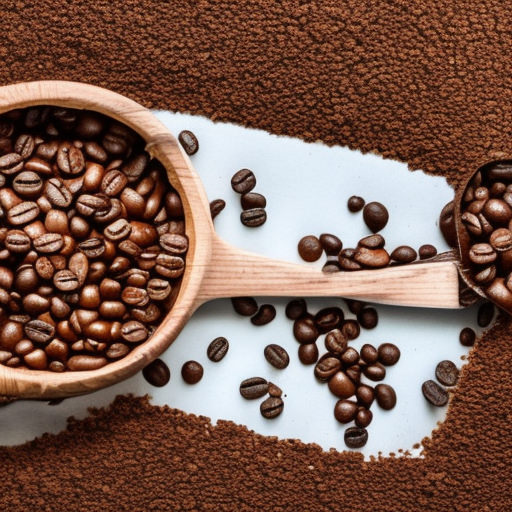I have been challenged with a little dirt mountain builder in our yard for a few week. I would like the little tunneler to move on rather than do it harm. While looking for natural solutions, I remembered that coffee grounds are liked by many creatures less than we do as a morning drink. Using used coffee grounds in the garden and yard can be beneficial in several ways, though it’s important to use them correctly to maximize their advantages and avoid potential pitfalls. Here’s how you can use coffee grounds and what they can do, apologies in advance, I got started typing and this grew:
Benefits of Used Coffee Grounds:
Soil Amendment: Coffee grounds are rich in nitrogen, making them a good addition to compost bins. As they break down, they release nitrogen, which is a critical nutrient for plant growth.
Improved Soil Structure: When added to the soil, coffee grounds can help improve its structure by increasing drainage, water retention, and aeration.
Worm Attractant: Worms love coffee grounds. Adding them to your garden soil or compost bin can attract more worms, which help to aerate the soil and break down organic matter more quickly.
Natural Pest Deterrent: Used coffee grounds can deter certain pests. Sprinkling grounds around plants may help to keep away ants, snails, and slugs.
Fungal Diseases Suppressant: Some studies have shown that coffee grounds can help suppress fungal diseases in the garden, though more research is needed to confirm these findings.
How to Use Coffee Grounds in the Garden:
In the Compost Bin:
- Why? Coffee grounds are rich in nitrogen, which is a primary component necessary for decomposing organic matter in a compost pile.
- How to Use: Add your used coffee grounds to your compost bin. Remember, compost requires a balanced diet to break down efficiently. Coffee grounds are considered a “green” or nitrogen-rich component. For every part of coffee grounds you add, ensure you add an equal or greater portion of “browns” (carbon-rich materials) such as dried leaves, twigs, or cardboard. This will ensure efficient decomposition and prevent the compost from becoming too wet or smelly.
- Tip: Rinse your coffee grounds if you’re storing them for a while before adding them to the compost bin. This will help prevent mold formation.
As a Mulch:
- Why? Mulching helps retain soil moisture, regulate soil temperature, and suppress weeds. Coffee grounds can serve as an organic mulch option.
- How to Use: Spread a layer of used coffee grounds around the base of your plants, but ensure it’s no more than half an inch thick. A layer thicker than this can become compacted and create a barrier, preventing water from penetrating. To improve its efficiency as mulch, mix the coffee grounds with other organic mulch materials, such as straw, bark, or leaves.
- Tip: Occasionally aerate or fluff up the coffee ground mulch layer to ensure it doesn’t compact too much and allows for proper water penetration.
Direct Soil Amendment:
- Why? Coffee grounds can enhance the structure and nutrient content of garden soil.
- How to Use: Before planting, mix used coffee grounds into the top few inches of your soil. This will introduce organic matter and slowly release nutrients as the grounds decompose.
- Tip: It’s a good practice to mix coffee grounds with other organic materials, like compost or well-rotted manure, to offer a balanced nutrient boost to the soil.
Worm Bin:
- Why? Vermicomposting, or worm composting, uses worms to break down organic waste into high-quality compost known as worm castings.
- How to Use: Introduce used coffee grounds into your worm bin. The worms will feed on the grounds and produce worm castings, which are rich in nutrients and beneficial microorganisms.
- Tip: Don’t overload the bin with coffee grounds. Ensure it’s just a part of the worms’ diet, mixed with other organic materials.
Natural Pest Deterrent:
- Why? Certain pests are repelled by the scent and texture of coffee grounds.
- How to Use: To deter pests such as ants, slugs, and snails, sprinkle used coffee grounds around the base of plants that are being affected or around the perimeter of garden beds.
- Tip: Refresh the coffee grounds periodically, especially after heavy rains, to maintain their deterrent effect.
Precautions
Acidity: Coffee grounds are often said to be acidic, but the acidity can be largely removed in the brewing process, making used grounds closer to neutral. However, if you’re concerned about the acidity, it’s best to add them to a compost pile rather than directly to the soil, as the composting process will help neutralize pH.
Overuse: Like any soil amendment, moderation is key. Too many coffee grounds can compact and create a barrier in the soil, preventing moisture and air from getting through.
Allelopathic Properties: There’s some debate over whether coffee grounds can inhibit the growth of certain plants due to their allelopathic properties. To be safe, especially if you’re new to using coffee grounds, you might want to start by testing them on a small area or adding them to your compost rather than directly to the garden.
Caffeine: There’s some evidence to suggest that the residual caffeine in coffee grounds can inhibit the growth of nearby plants, so it’s something to be aware of if you’re applying them in large quantities.
Avoid Attracting Pests: While coffee grounds can deter some pests, if they’re not fully used or if they start molding, they can attract others. Make sure the grounds are used (i.e., they’ve had water run through them) and dry them out if you plan to store them for a while before use.
Used coffee grounds can be a valuable addition to the garden, but like any other tool or amendment, they should be used wisely and in moderation.
Please note that if you purchase from clicking on the link, some will result in my getting a tiny bit of that sale to help keep this site going.

